General Morphology (p. 8)
Body size and shape (p. 8)
Anatomy (p. 8)
Neurocranium and splanchnocranium (p. 8)
Postbranchial endoskeleton (p. 12)
Dermal skeleton (p. 13)
Head, branchial, and pectoral regions (p. 13)
Dentition (p. 15)
Postcranial skeleton (p. 17)
Fins and fin spines (p. 17)
Squamation (p. 19)
Sensory canal system (p. 23)
Histology (p. 23)
Dentition (p. 23)
Fin spines (p. 24)
Scales (p. 26)
Soft anatomy (p. 28)
Habitats, Taphonomy, and Adaptations (p. 30)
Biostratigraphy (p. 32)
Relationships (p. 33)
Classification and Phylogeny (p. 33)
Systematics (p. 36)
Chondrichthyes (p. 36)
Subclass Acanthodii (p. 36)
Order Ischnacanthiformes (p. 36)
Family Acritolepidae (p. 36)
Family Ischnacanthidae (p. 40)
Family Podoliacanthidae (p. 46)
Family Poracanthodidae (p. 47)
Order Ischnacanthiformes (p. 51)
Family incertae sedis (p. 51)
Order Diplacanthiformes (p. 52)
Family Culmacanthidae (p. 52)
Family Diplacanthidae (p. 53)
Family Gladiobranchidae (p. 58)
Family incertae sedis (p. 59)
Order Acanthodiformes (p. 61)
Family Mesacanthidae (p. 62)
Family Cheiracanthidae (p. 65)
Family Howittacanthidae (p. 69)
Family Acanthodidae (p. 70)
Family incertae sedis (p. 78)
Order Tchunacanthida (p. 78)
Family Lenacanthidae (p. 78)
Family Tchunacanthidae (p. 80)
Family incertae sedis (p. 80)
Acanthodii, Order incertae sedis (p. 80)
Family Euthacanthidae (p. 80)
Family Machaeracanthidae (p. 82)
Family Vesperaliidae (p. 85)
Order and family incertae sedis (p. 86)
Acanthodian form taxa (p. 86)
Taxa based on teeth (p. 101)
Taxa based on fin spines (p. 102)
Stem Chondrichthyes (p. 104)
Order incertae sedis (p. 104)
Family Brochoadmonidae (p. 104)
Family Climatiidae (p. 104)
Family Gyracanthidae (p. 107)
Family Kathemacanthidae (p. 112)
Family Sinacanthidae (p. 113)
Family incertae sedis (p. 114)
Doubtfully or certainly not Acanthodii (p. 117)
References and Bibliography (p. 118)
Abbreviations used in Figures (p. 131)
Abbreviations used in Text (p. 131)
Abbreviations of Institutions (p. 132)
Index of Genera (p. 133)
Index of Higher Categories (p. 135)
HPI 5 • Acanthodii, Stem Chondrichthyes – Revised and extended version
2021. [Englisch] – 135 S., 58 Schwarzweißabbildungen.
30,3 x 21,5 cm, Hardcover.
Reihe: Handbook of Paleoichthyology
122,00 €
zzgl. Versandkosten / Versandkostenfrei in D
Agassiz’s beautiful illustrated five volume opus “Recherches sur les poissons fossiles” (1833-1843) was the actual beginning for paleoichthyology. He gave, in this publication, the first comprehensive presentation of fossil agnathans and fishes. In the ensuing years, numerous descriptions of forms (mostly from Europe and North America) were published. These were compiled by A. S. Woodward (1889-1901), one of the many excellent paleoichthyologists (from past to present) in Great Britain, in his famous “Catalogue of Fossil Fishes in the British Museum (Natural History)”. The catalogue was compiled so well that it is continuously used by specialists in paleoichthyology.
In Scandinavia after World War I, E. A:son Stensiö founded an important school for paleoichthyology. He and his followers did extremely detailed investigations, with great emphasis on anatomical interpretations. These brought about strong controversies, between the Stockholm and the English-American schools, regarding the interpretation of morphological data and the interrelationships of different groups of agnathans and fishes. Even though the Stockholm school disappeared with the demise of its instigators, the controversy lived longer, and Russian, German and French paleoichthyologists found themselves having to take sides. The English-American school including Australian and Chinese paleoichthyologists dominates the field now.
Between 1960 and 1970 one synopsis in Russian (Obruchev, D. V. (ed.) 1964: Osnovy paleontology, vol. 11: Agnatha, Pisces; 1967: Engl. translation), one in French (Piveteau, J. (ed.) 1964 to 1969: Traité de Paléontologie, vol. 4: 1, Vertébrés, Agnathes; 2, Gnathostomes, Acanthodiens, Placodermes, Elasmobranches; 3, Actinopterygiens, Crossopterygiens, Dipneustes) and a shorter one in German (Müller, A. H. 1966: Lehrbuch der Paläozoologie. Band III. Vertebraten. Teil 1. Fische im weiteren Sinne und Amphibien) were published, covering the whole field of paleoichthyology. The Osnovy presents the fishes in a systematic order, whereas the Traité focusses on morphological-anatomical aspects following the Swedish School, members of the Swedish School compiled part of the Traité. A new version of the fish volume of the Osnovy (Novitskaya, L. I. & Afanassieva, O. B. (eds.), Agnathans and Early Fishes) was published in 2004; it presents selected groups of Paleozoic fishes (Thelodonti, Heterostraci, Osteostraci, and Sarcopterygii [Crossopterygii and Dipnoi]), but is more geographically constrained than the first edition of the Osnovy.
New and young paleoichthyologists have replaced the older well-reputed generation. New findings, especially in remote and less explored regions (Asia, southern continents, and northern and southern polar regions) reveal a great amount of new information about Paleozoic agnathans and fishes. Especially important are the findings in China and Australia because they were accompanied by the emergence of a new group of scientists.
In addition, another event has influenced and will continue to influence paleoichthyology: Willi Hennig’s book “Grundzüge einer Theorie der phylogenetischen Systematik” (1950) translated in 1966 into English (“Phylogenetic systematics”) by R. Zangerl, a contributor to the Handbook. Since the 1970s, revision, verification and/or falsification of the old ideas regarding the interrelationships of agnathans and fishes has ensued. The new approach that began in the 1960s contradicted the approach of the Stockholm School and was refuted by its members, what lead to the demise. The new group of paleoichthyologist in Uppsala, Sweden, is no continuation, in contrary it is a branch of the English tradition of paleoichthyology. Finally, new nondestructive methods like CTscan and Synchrotron X-ray microtomography have revolutionized our ability to interpret internal structures of fossils.
The Handbook of Paleoichthyology summarizes (as far as possible) all known data as a comparison with new findings and for interpretation of interrelationships. The reader will find the most current analyses of interrelationships, sometimes even contrary ones in different volumes.
Each volume deals with the anatomy and the fossil record of agnathans or of a group (class, subclass, etc.) of gnathostome fishes, except volume 10, which deals with one organ of osteichthyan fishes, otoliths or ear stones. The first edition of volume 5 on Acanthodii was published in 1979 by a well known paleoichthyologist, Robert Denison. Many new taxa have been published in the last 40 some years, and more importantly the interpretation of phylogenetic relationships of the acanthodians within the group and with other gnathostomes has changed, with even the taxon Acanthodii in doubt as a monophyletic unit. The affinity of acanthodians either with chondrichthyans or osteichthyans was not decided in the 1970s and 1980s, whereas today the consensus is that they are placed at the base of the chondrichthyans. No doubt the final word has not yet been written regarding their relationships, but a synthesis of the new and old ideas are presented here by the person with the broadest and best knowledge of acanthodians today.
Volumes have been reprinted (vol. 3B) or new editions (vol. 3E replacing vol. 3B and here vol. 5 replacing vol. 5) published whereas other volumes have not been published yet. Volume 8A will be published simultaneously with volume 5. Volumes 1C, 3C and 8B are in progress. I hope that additional volumes will follow and be published by the present publisher, Dr. Friedrich Pfeil.
Lawrence, September 2020, H.-P. Schultze
Sie müssen angemeldet sein, um eine Rezension veröffentlichen zu können.
„*“ zeigt erforderliche Felder an
Ähnliche Produkte
-
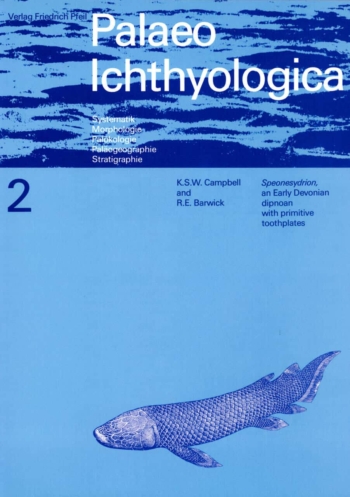
Speonesydrion, an Early Devonian dipnoan with primitive toothplates
20,00 €zzgl. Versandkosten / Versandkostenfrei in D
-
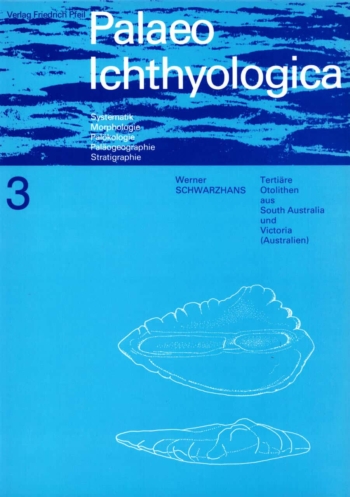
Tertiäre Otolithen aus South-Australia und Victoria (Australien)
20,00 €zzgl. Versandkosten / Versandkostenfrei in D
-
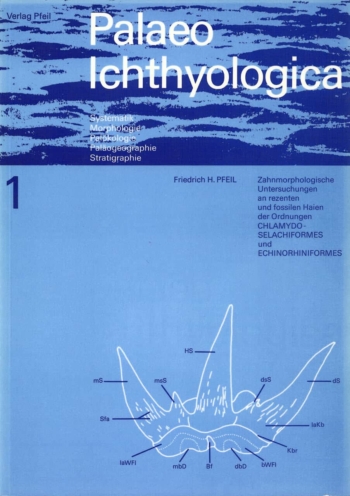
Zahnmorphologische Untersuchungen an rezenten und fossilen Haien
40,00 €zzgl. Versandkosten / Versandkostenfrei in D
-
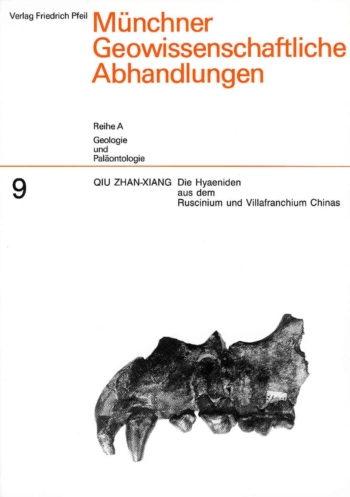
Die Hyaeniden aus dem Ruscinium und Villafranchium Chinas
30,00 €zzgl. Versandkosten / Versandkostenfrei in D
Wir sind gerne für Sie da
Verlag Dr. Friedrich Pfeil
Hauptstraße 12B
5232 Bergkirchen OT Günding – Germany
Tel.: +49 8131 61 46 590
Fax: +49 8131 61 46 591
E-Mail: info@pfeil-verlag.de
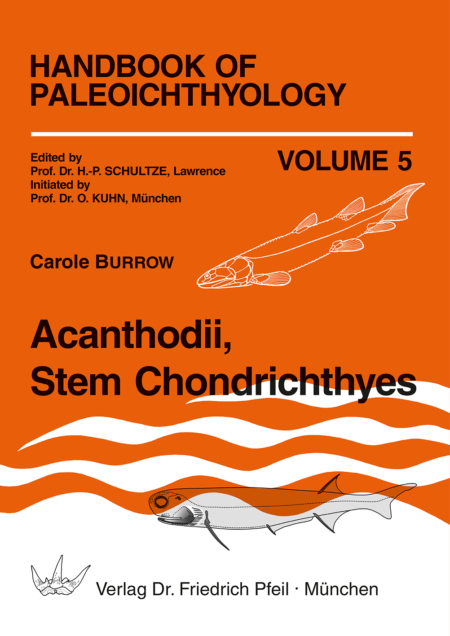
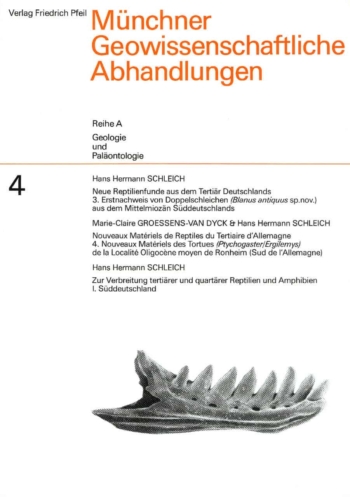
Rezensionen
Es gibt noch keine Rezensionen.